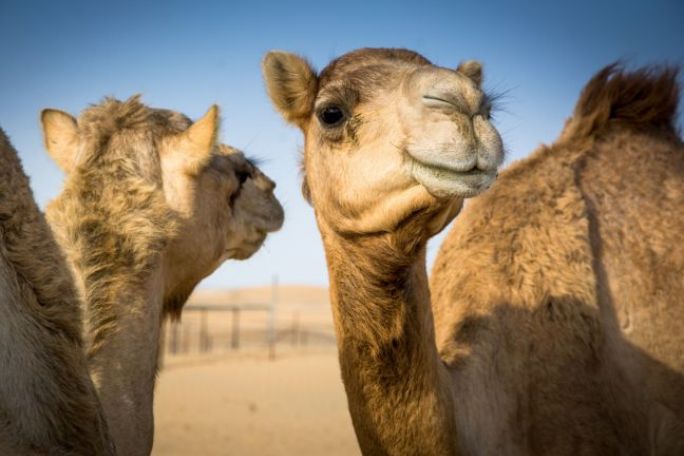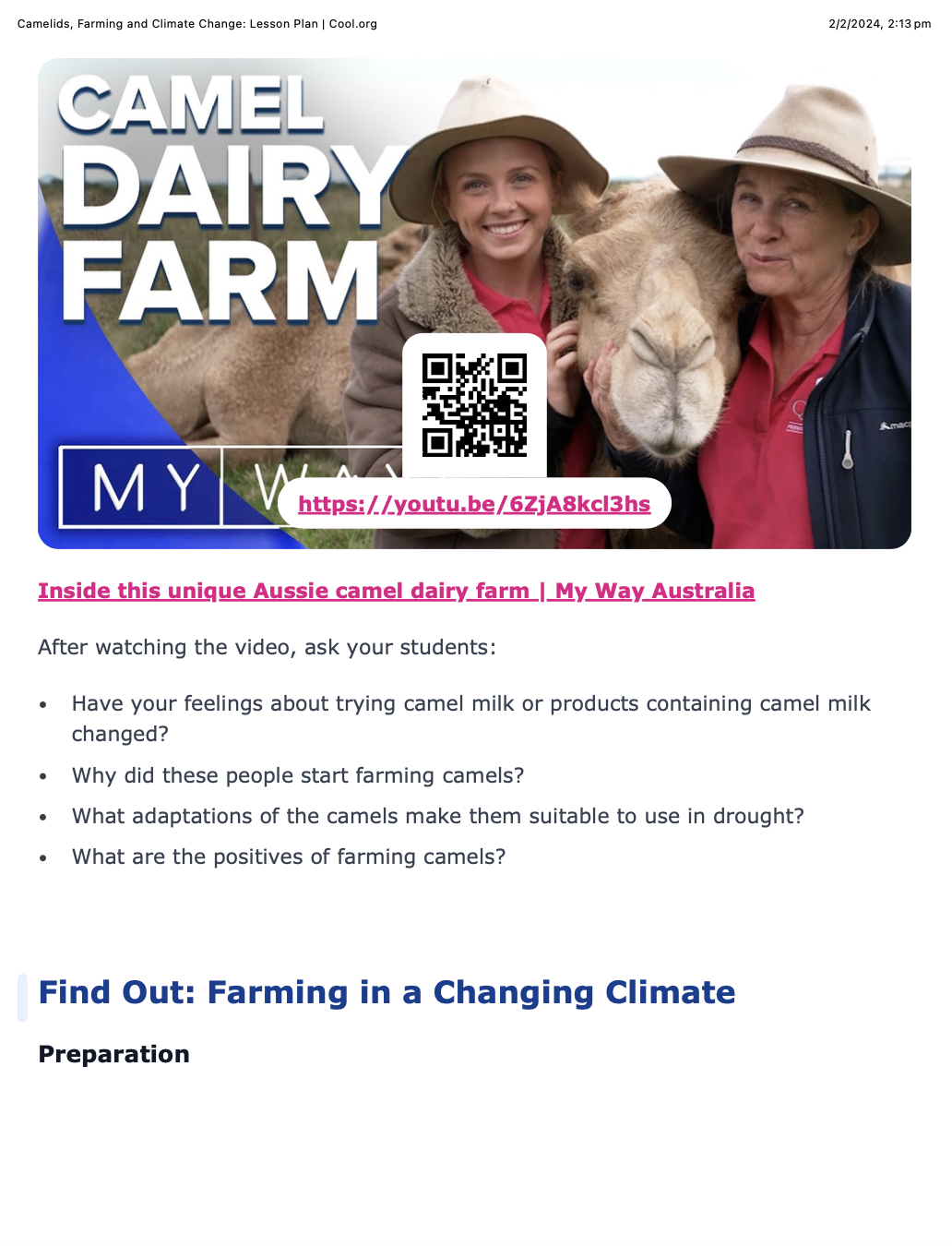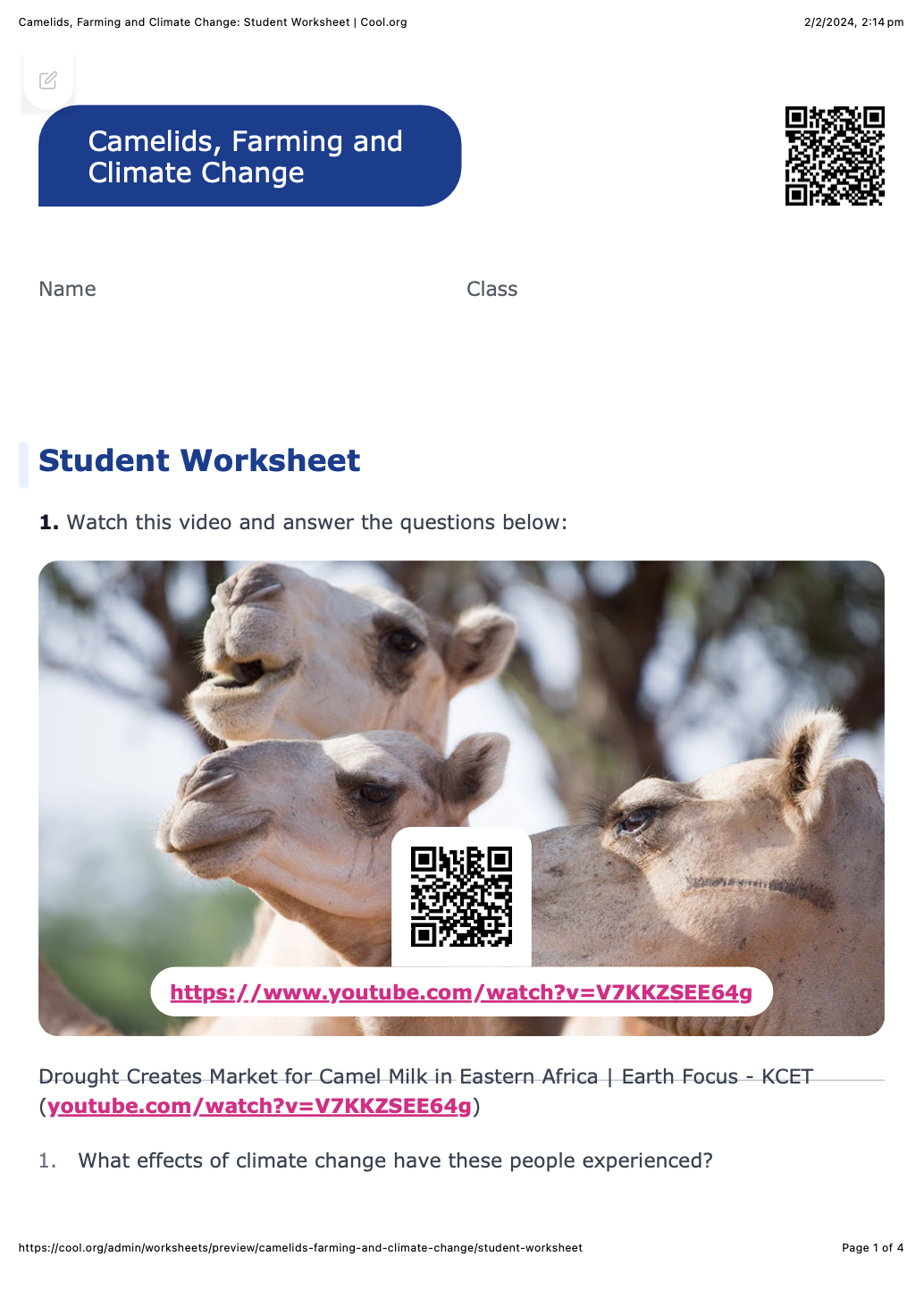Lesson summary
Students explore how climate change affects both the physical conditions of habitats and farming practices as well as investigate how the adaptations of camels enable their survival in these changing conditions and contribute to their climate resilience. Students compare the advantages of camel farming to cattle farming in a changing climate and create a persuasive communication to advocate for camel farming.
Learning intentions:
Students will...
- explore how climate change impacts physical habitats, communities and farming practices
- identify how the adaptations of camels contribute to their climate resilience
- investigate the difference between cattle and camel farming in a changing climate.
Success criteria:
Students can...
- outline how climate change affects the physical conditions of habitats and farming practices
- describe how the adaptations of camels contribute to their climate resilience and usefulness as livestock
- design a persuasive piece of communication comparing camel and cattle farming.
Lesson guides and printables
Curriculum links
Select your curriculum from the options below.
Lesson details
Skills
This lesson is designed to build students’ competencies in the following skills:
- critical thinking
- collaboration
- curiosity
- problem solving
Curriculum Mapping
Australian Curriculum (v9.0) content description: Grade 5 & 6 Science
- examine how particular structural features and behaviours of living things enable their survival in specific habitats (AC9S5U01)
- investigate the physical conditions of a habitat and analyse how the growth and survival of living things is affected by changing physical conditions (AC9S6U01)
- investigate how scientific knowledge is used by individuals and communities to identify problems, consider responses and make decisions (AC9S5H02/6H02).
Relevant parts of Year 5 & 6 achievement standards: Students can explain how the form and behaviour of living things enables survival and how changes in physical conditions affect living things. They can also describe how individuals and communities use scientific knowledge.
NSW Syllabus outcomes: ST3-4LW-S
General capabilities: Critical and Creative Thinking
Cross-curriculum priority: Sustainability
UN Sustainable Development Goals
- Target 15.1: By 2020, ensure the conservation, restoration and sustainable use of terrestrial and inland freshwater ecosystems and their services, in particular forests, wetlands, mountains and drylands, in line with obligations under international agreements.
Resources Required
- Device capable of displaying audio-visual material
- Devices for student research
- Student worksheet
Additional Info
This is an original Cool+ lesson.
Level of teacher scaffolding: Medium - some explicit teaching may be required, facilitation of research, discussion and running an experiment.



Welcome back!
Don't have an account yet?
Log in with:
Create your free Cool.org account.
Many of our resources are free, with an option to upgrade to Cool+ for premium content.
Already have an account?
Sign up with:
By signing up you accept Cool.org's Terms and Conditions(Opens in new tab) and Privacy Policy(Opens in new tab).